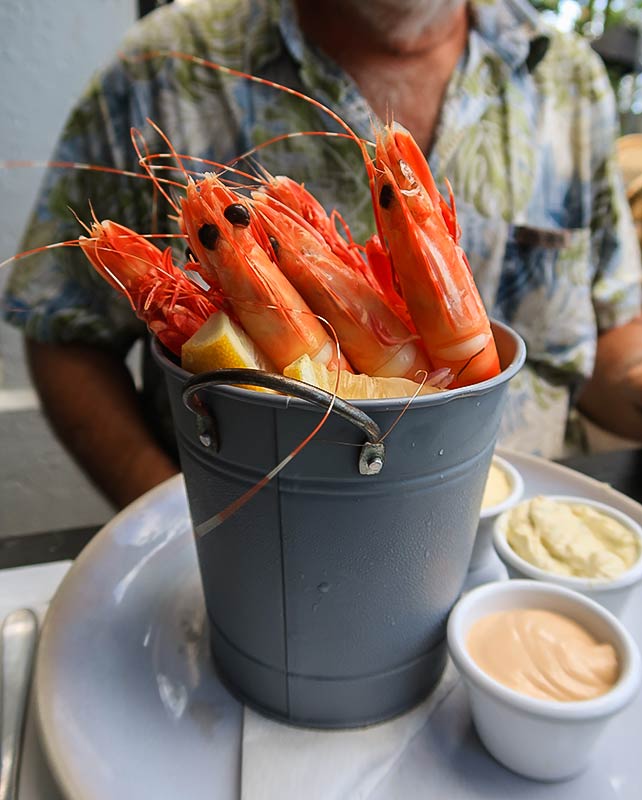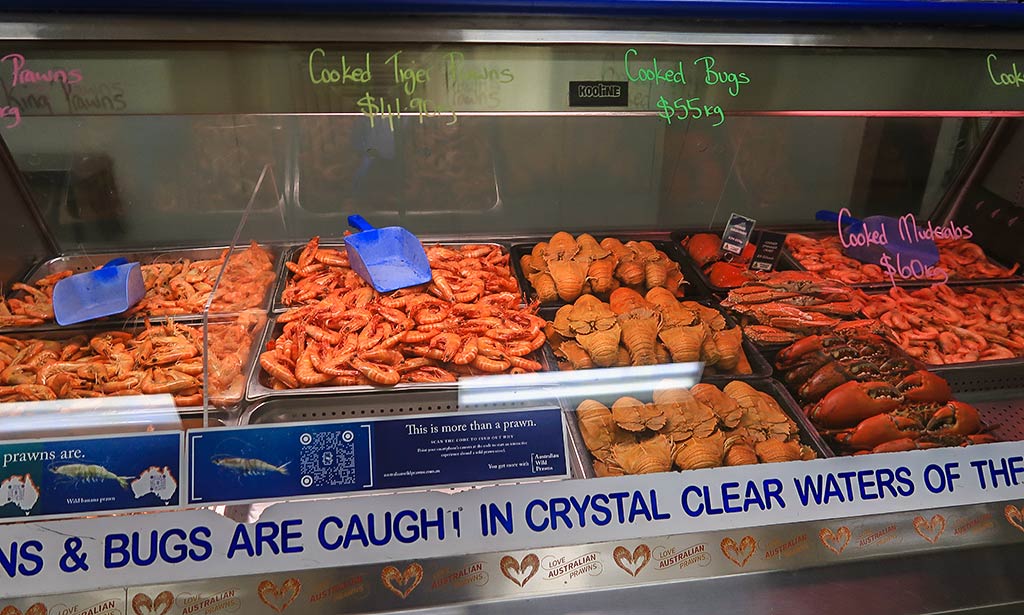Posted November 22, 2022
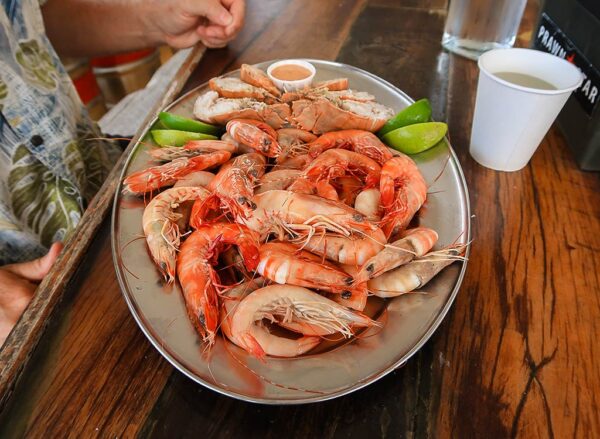
Maine has its lobster, Alaska has its crab, Louisiana has crawfish, New Zealand has green-lipped mussels, but for Australia, it’s all about the prawns. Especially here in Queensland where they’re both farmed and caught in the wild.
Australian prawns should be more well known in North America, but they missed their chance at fame when, during Paul Hogan’s famous ad promoting Australian tourism, he offered to “slip another shrimp on the barbie for ya.” Unfortunately the tourism board felt Americans wouldn’t know what a prawn was; so they changed the word to shrimp. (It apparently never occurred to them that no American would ever be satisfied with a single barbecued shrimp as a meal.)
Although they look similar, prawns are not the same as shrimp. Shrimp are more segmented and curved, while prawns have larger, straighter bodies. Shrimp spend their lives swimming in salt water, while prawns crawl along the bottom in fresh or brackish water. Because of this, shrimp are saltier, while prawns have a naturally sweeter taste.
Unless being used as an ingredient in a seafood dish, prawns are generally cooked in the shell, then chilled and served cold. They are eaten by twisting off the head, peeling the shell off the body, squeezing off the tail, and depending on the preferences of the eater, can be deveined after shelling (which is easy to do). They can then be enjoyed just as they are, or with a little squeeze of lemon. Most commonly they are dipped in seafood sauce (a thousand island-like mixture) that tastes wonderful on this sort of shellfish.
Prawns can basically be divided into five main types (although there are sub-types, too). There are light-tasting banana prawns, flavorful endeavour prawns, versatile king prawns, little sweet school prawns from south Australia, and last but not least, tiger prawns with their distinctive red stripes.
Tiger Prawns are generally the favored prawn of restaurants, hotels, and seafood markets. It seems the reason for this is they’re the best-looking prawns and make the nicest presentation. They can also grow to be the largest of prawns which also looks pretty impressive.
Meanwhile, many prawn enthusiasts claim the endeavour is best. We haven’t tried all the types of prawns but of those we have tried, tiger prawns were our favorite. That is until we went to an eatery in Cairns which served both tiger prawns and smaller light-colored prawns. In this case, those light prawns came out the winner. We asked what they were but couldn’t understand the answer the waitress gave us (as she was speaking Australian!).
Not long after that, we went to a restaurant north of Cairns and ordered the prawn cocktail which had huge tiger prawns. They were incredible and are, in fact, the closest thing we’ve had to American lobster in texture and flavor since we’ve been in this part of the world.
Australian prawns are shipped and sold around the world, but like other seafood, are at their best when had near their source. They’re often sold in kilo bags (a little over 2lb) at seafood markets for about 35 – 40 Australian dollars, which is about $25 US. Adding in a jar of seafood sauce, we’d have a yummy meal for two for a reasonable price!
Below are a few photos of our prawn experiences, including prawns as they are sold in seafood markets and restaurant prawns.
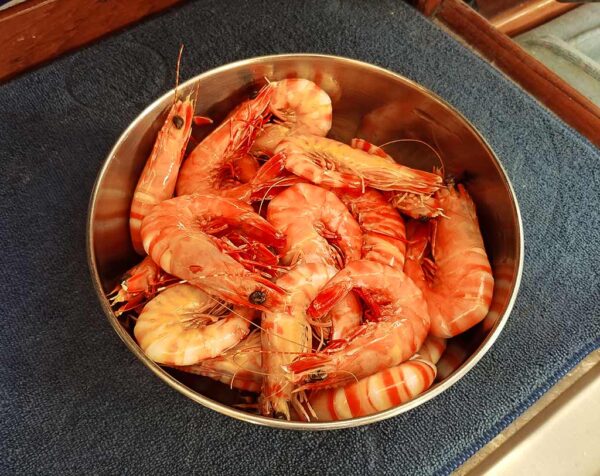
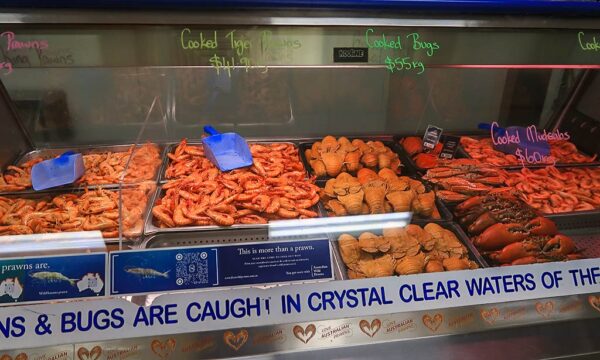
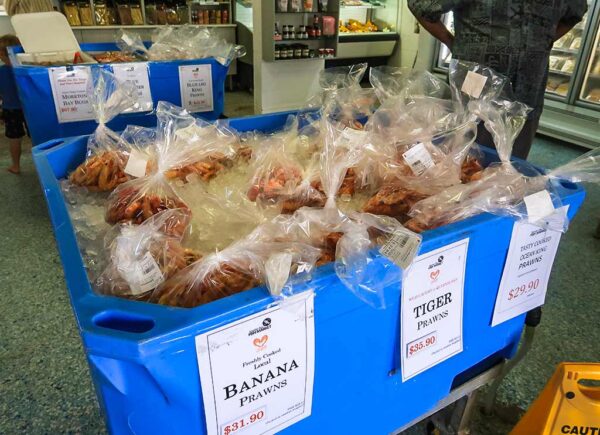
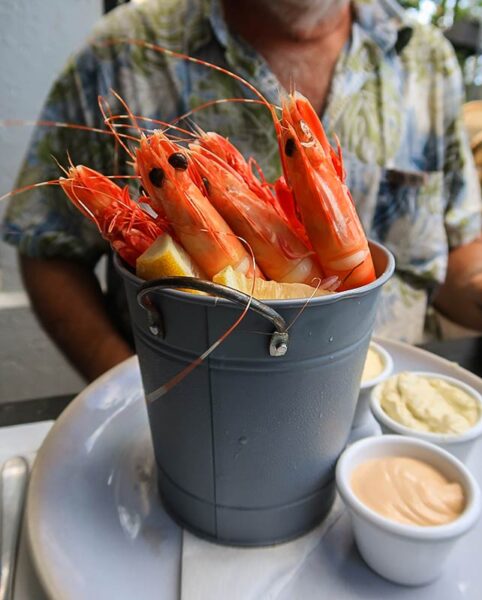
Sadly our time in Australia will soon come to an end, and I’m startled to realize our chance to compare prawns is dwindling! Hopefully our next stop, Cooktown, will have a good selection of them and we can do some prawn comparison tasting, but if all we find are tiger prawns, we’ll still be very happy campers! –Cyndi







